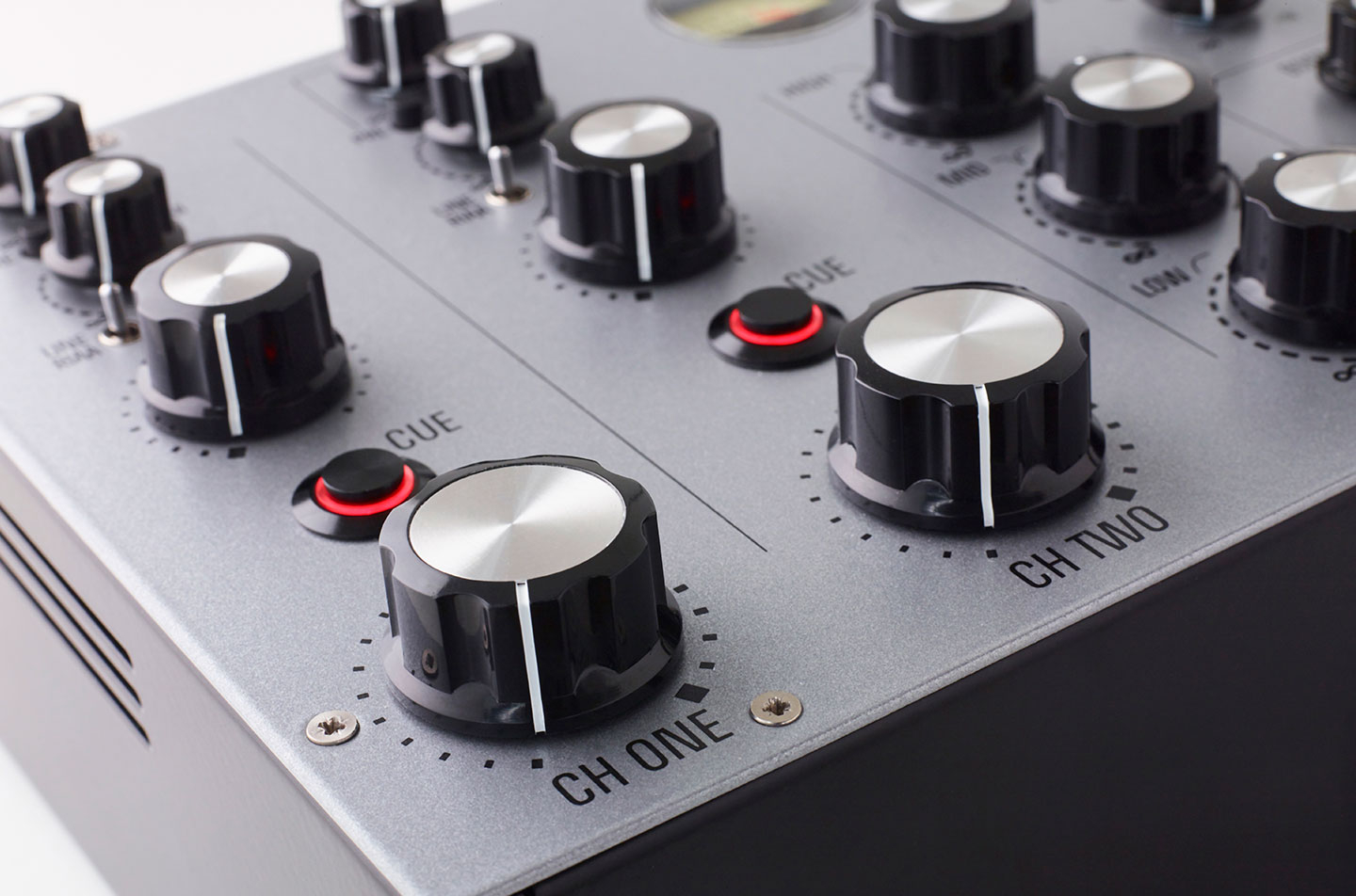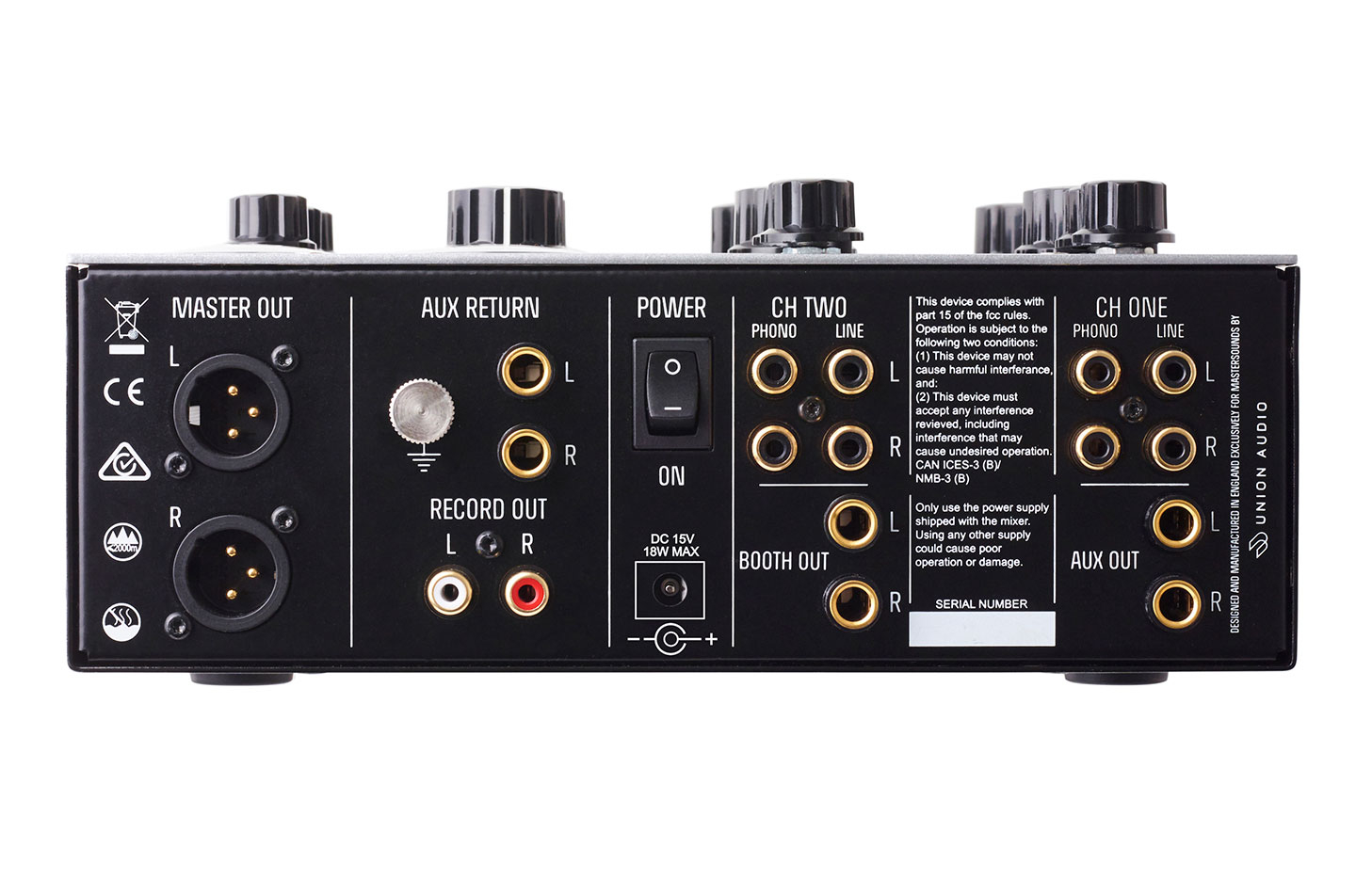- Like other artifacts of electronic music history, rotary DJ mixers are victims of their own prestige. On the one hand, they are tools that far outstrip the consumer-oriented builds of modern, mass-produced DJ mixers. They're built with better parts and should sound sweeter than the average mixer. For a niche of DJ aficionados, they're iconic instruments used by the untouchable pioneers of the '70s and '80s. They're relics of a more authentic past. On the other hand, or rather because of these attributes, the modern-day rotary mixer is a fetish item. They're boutique, short-run, exclusive, expensive. Although DJs with enough clout might demand one at every gig, no one needs a rotary. They are a point of refined taste. They demand a very specific style of mixing records. So being skeptical is pretty reasonable.
Yet while rotaries, like modular synths, have been commodified into elite products, behind the scenes is a scattering of enthusiastic engineers just doing what they love: building the instruments and machines that make them, and some others, happy. As Floating Points says, rotaries are "a personal thing." While you may curse capitalism every time you see a rotary's price tag, no one is forcing you to shell out. While a conglomerate has dipped its toes in the rotary waters, most of the companies making these mixers are staffed by a handful of people working on what one can only assume to be slim margins. Yet in the last few years, again bearing a resemblance to the modular world, the number of new rotaries on the market has increased. E&S, Condesa, Isonoe, Alpha Recording System, Superstereo, Rane, Varia Instruments, Meza Studios, Can Electric and even the progenitors Bozak have all set mouths salivating with new rotaries. Now you can add MasterSounds to that list.
The Radius 2 is a collaborative project between company founder Ryan Shaw and Andy Rigby-Jones, who's something of an MVP in mixer design circles, having had hands in the design of the Xone and Richie Hawtin's PLAYdifferently mixer. According to MasterSounds, Rigby-Jones designed the Radius 2 and builds, tests and ships each unit. Meanwhile, Shaw's family owns a metalworks where the frames are built. While the means of construction screams boutique, it's reassuring to know that your Radius 2 has been through the hands of the big man himself. It comes in two versions. One features Burr-Brown operational amplifiers, while the more expensive model is fitted with MUSES01 op amps, which offer a slightly lower total harmonic distortion plus noise level for an added £150 pounds. The thing itself is tiny, fitting easily in a tote bag or the like, but feels robust thanks to its chunky controls.
The layout is deathly simple, featuring two channels with a high-pass filter, trim and aux control besides your usual cue and volume dials. They're flanked by a three-band frequency shaper that's called both an EQ and an isolator, suggesting it hits a middle ground between the broad sweeps of the latter and the tighter cuts of the former. I found the VU meters to be a more intuitive visual feedback source than the colourful gain meters found on most mixers. Generally speaking, VUs represent the energy of a track, something that isn't necessarily reflected in a raw measure of db. Of course, one can simply set their levels in the phones but, for me, VUs can offer another form of insight into what elements of a track are going to be most present coming out of the speakers.
The volume dials are larger and have a looser feel than the others. So while rotaries generally encourage slow movements, a dextrous twist of the wrist can produce some fast fader-esque action if required. But generally, you're enjoying gently teasing out subtle changes in frequency and volume on the Radius 2. A standard mix often involves just a touch of high-pass filtering and a keen ear on volume and track structure. The filters themselves are very transparent. These are clearly not for dramatic, Xone-style resonant sweeps. With the dial at 11 o'clock, the weight and impact are very much there while the deepest frequencies are eased out. Even around noon you'll get some of the higher sub content seeping through. The filtering only becomes truly obvious at two o'clock. Above that point is all high sizzle. Without knowing the exact specs of the filter, I assume that it's gently sloped. They are transparent in that they're generous with the frequencies they let through—often I'd have assumed a low frequency element would have totally disappeared at a certain setting yet its presence would be still apparent. This makes for warm, imperceptible mixes.
For more audacious moves, there's the Master EQ/Isolator section. The three bands are full kill and seem to have a wide frequency range for an EQ and a narrow one for an isolator. Unlike the high-pass filters, the bass drops out fairly dramatically and quickly when cutting the low band. While it depends on the track, I found adding high frequencies to be forgiving in that even adding over, say, seven decibels doesn't fry your ears. In use, it was pleasing to push the highs when doing basic bass cuts for extra dynamics. I rarely indulge in Claude Young-school isolator extravagance, but I could imagine that those users might prefer an isolator formatted left-to-right rather than up-and-down as it is on the Radius 2.
Line and phono signals come in at roughly similar levels. I rarely had a level difference on the trim dials of more than 15 degrees, which is far better than most mixers. The headroom is also impressive. Using a medium size rig and a vinyl signal with no extra gain, I never turned the master above nine o'clock except to test the output levels. It also would have been nice to have an extra gain control on each channel for squeezing extra line signals on to the admittedly limited two channel design. But after a few mixes, such thoughts are far from mind. There's something in the effortless quality of the sound, the simple layout, the large controls and the transparency of the filter that make for a meditative mixing experience. Everything happens slowly. As such, I rarely found myself on the isolator, being satisfied with the subtlety of the filter, helping tracks retain their warmth and body, mixing with structure and volume rather than EQ. Of course, this is what rotaries are all about, and you have to be obsessed by this form of mixing to fork out the coin for something like the Radius 2.
Ratings:
Cost: 3.6
Versatility: 3.5
Ease of use: 4.7
Sound: 4.8
 For more audacious moves, there's the Master EQ/Isolator section. The three bands are full kill and seem to have a wide frequency range for an EQ and a narrow one for an isolator. Unlike the high-pass filters, the bass drops out fairly dramatically and quickly when cutting the low band. While it depends on the track, I found adding high frequencies to be forgiving in that even adding over, say, seven decibels doesn't fry your ears. In use, it was pleasing to push the highs when doing basic bass cuts for extra dynamics. I rarely indulge in Claude Young-school isolator extravagance, but I could imagine that those users might prefer an isolator formatted left-to-right rather than up-and-down as it is on the Radius 2. Line and phono signals come in at roughly similar levels. I rarely had a level difference on the trim dials of more than 15 degrees, which is far better than most mixers. The headroom is also impressive. Using a medium size rig and a vinyl signal with no extra gain, I never turned the master above nine o'clock except to test the output levels. It also would have been nice to have an extra gain control on each channel for squeezing extra line signals on to the admittedly limited two channel design. But after a few mixes, such thoughts are far from mind. There's something in the effortless quality of the sound, the simple layout, the large controls and the transparency of the filter that make for a meditative mixing experience. Everything happens slowly. As such, I rarely found myself on the isolator, being satisfied with the subtlety of the filter, helping tracks retain their warmth and body, mixing with structure and volume rather than EQ. Of course, this is what rotaries are all about, and you have to be obsessed by this form of mixing to fork out the coin for something like the Radius 2. Ratings: Cost: 3.6 Versatility: 3.5 Ease of use: 4.7 Sound: 4.8
For more audacious moves, there's the Master EQ/Isolator section. The three bands are full kill and seem to have a wide frequency range for an EQ and a narrow one for an isolator. Unlike the high-pass filters, the bass drops out fairly dramatically and quickly when cutting the low band. While it depends on the track, I found adding high frequencies to be forgiving in that even adding over, say, seven decibels doesn't fry your ears. In use, it was pleasing to push the highs when doing basic bass cuts for extra dynamics. I rarely indulge in Claude Young-school isolator extravagance, but I could imagine that those users might prefer an isolator formatted left-to-right rather than up-and-down as it is on the Radius 2. Line and phono signals come in at roughly similar levels. I rarely had a level difference on the trim dials of more than 15 degrees, which is far better than most mixers. The headroom is also impressive. Using a medium size rig and a vinyl signal with no extra gain, I never turned the master above nine o'clock except to test the output levels. It also would have been nice to have an extra gain control on each channel for squeezing extra line signals on to the admittedly limited two channel design. But after a few mixes, such thoughts are far from mind. There's something in the effortless quality of the sound, the simple layout, the large controls and the transparency of the filter that make for a meditative mixing experience. Everything happens slowly. As such, I rarely found myself on the isolator, being satisfied with the subtlety of the filter, helping tracks retain their warmth and body, mixing with structure and volume rather than EQ. Of course, this is what rotaries are all about, and you have to be obsessed by this form of mixing to fork out the coin for something like the Radius 2. Ratings: Cost: 3.6 Versatility: 3.5 Ease of use: 4.7 Sound: 4.8